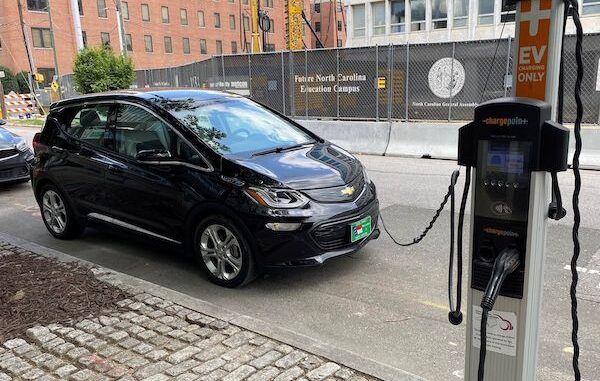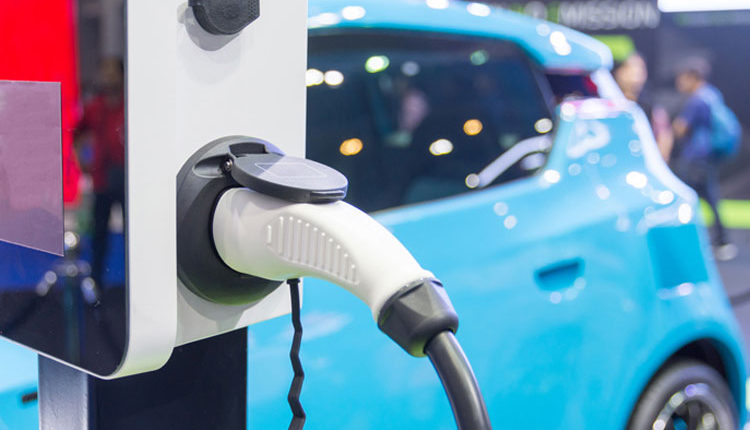Leading EV Charging News: Trick Updates on Facilities and Innovation

Current Advancements in Fast-Charging Innovation

In addition, advancements in battery innovation, including boosted thermal management systems and greater energy density batteries, enhance fast-charging capacities. These growths reduce the risk of battery destruction during fast charging, making sure long life and performance for EV proprietors.
Additionally, the assimilation of wise charging solutions is enhancing customer experience, making it possible for real-time tracking and vibrant pricing designs. EV Charging news. This flexibility permits drivers to optimize billing expenses and times based upon grid need
As car manufacturers remain to spend in fast-charging networks, the cooperation between market stakeholders is essential. Collaborations between charging terminal service providers and vehicle manufacturers are paving the means for comprehensive insurance coverage, eventually promoting a more robust EV ecosystem. These advancements are critical in supporting the change to sustainable transport.
Federal Government Efforts for Charging Expansion
Federal government initiatives play a critical duty in the expansion of electrical automobile (EV) charging facilities, helping with the shift to lasting transportation. Various government and state programs are being carried out to improve billing accessibility, decrease the economic concern on customers, and promote the fostering of electrical vehicles.
Significantly, the U.S. government has actually alloted significant funding via the Facilities Investment and Jobs Act, which allocates $7.5 billion for EV billing network growth across the country. This funding is focused on releasing hundreds of new billing terminals, specifically in underserved locations, thus attending to array anxiousness among possible EV buyers.
Furthermore, many states are passing regulations to enhance the allowing procedure for charging station setups, which is essential for accelerating deployment. Motivations such as tax credit scores and refunds for both customers and companies are likewise being presented to motivate the installment of charging facilities.
Additionally, public-private partnerships are significantly ending up being an emphasis, leveraging exclusive investment to match federal government funding. These campaigns emphasize a joint approach vital for building a extensive and effective EV billing network, inevitably adding to a greener and even more sustainable future.
Cutting-edge Battery Solutions Enhancing Effectiveness
Revolutionizing the landscape of electrical automobile (EV) technology, innovative battery services are dramatically enhancing effectiveness and efficiency. Developments in battery chemistry, especially with lithium-sulfur and solid-state batteries, are bring about increased power thickness, which enables longer arrays and faster charging times. These brand-new battery types have the potential to her response outperform conventional lithium-ion batteries by using greater abilities while lowering weight, therefore enhancing general lorry performance.
Moreover, developments in battery management systems (BMS) are optimizing power use and extending battery lifespan. Intelligent algorithms monitor battery wellness and efficiency, making it possible for real-time modifications to billing and releasing processes. This not only enhances the efficiency of the battery yet additionally makes certain a much more trusted and lasting energy resource for EVs.
Moreover, the assimilation of reusing technologies is attending to the environmental influence of battery production and disposal. Technologies in second-life applications for EV batteries are promoting their usage in energy storage systems, adding to a round economic climate.
As these innovative battery remedies remain to advance, they guarantee to transform the EV market, making electrical lorries a lot more available and appealing to a more comprehensive audience while sustaining worldwide sustainability objectives.

Collaboration Between Automakers and Charging Networks
Acknowledging the essential demand for a durable billing facilities, car manufacturers are significantly teaming up with billing network companies to improve the EV ownership experience (EV Charging news). These partnerships aim to create a seamless billing ecosystem that profits customers and sustains the shift to electrical automobiles
Major automotive brands are joining forces with established billing networks to increase their billing terminal insurance coverage, making certain vehicle drivers have accessibility to practical and reputable billing choices. For instance, partnerships with networks like ChargePoint and Electrify America permit car manufacturers to integrate charging remedies straight into their cars' navigating systems, guiding customers to the nearest terminals and discover this info here supplying real-time availability updates.
Furthermore, these cooperations commonly result in the advancement of fast-charging innovations that considerably minimize the moment required to recharge an EV. By merging resources and knowledge, automakers and charging networks can introduce much faster, developing solutions that fulfill the growing need for electric wheelchair.
Furthermore, joint efforts might likewise result in even more standardized charging methods, which can minimize customer confusion and advertise wider EV fostering. Overall, these calculated partnerships are pivotal in check these guys out developing a reliable and user-friendly billing infrastructure that satisfies the requirements of an increasing electric car market.
Obstacles Dealing With EV Billing Infrastructure
As the electric automobile market proceeds to grow, several difficulties are emerging that hinder the growth of a comprehensive charging infrastructure. One of the main challenges is the not enough variety of billing stations, particularly in rural and underserved metropolitan areas. This space produces variety anxiousness amongst potential EV purchasers, hindering them from making the switch.
Additionally, the lack of standardization in charging modern technology makes complex the framework landscape. Variants in plug types and billing rates can produce confusion for customers and boost operational intricacies for billing network operators.
Another pushing issue is the high price connected with the setup and upkeep of billing terminals, which can be a barrier for both public entities and personal businesses. Regulatory hurdles and zoning constraints can delay the implementation of charging framework, hampering progress in expanding important services. Attending to these obstacles will certainly be essential for cultivating a durable EV environment that supports the transition to lasting transport.
Final Thought
Finally, the continuous improvements in EV billing modern technology, supported by substantial government initiatives and cutting-edge battery remedies, are crucial for the growth and effectiveness of electrical automobile framework. Cooperations in between automakers and charging carriers even more boost terminal coverage, resolving the growing need for easily accessible charging alternatives. In spite of difficulties that persist within the EV charging landscape, these developments indicate a favorable trajectory in the direction of a much more lasting and effective electrical automobile ecological community.
Technologies in billing framework have led to the development of ultra-fast chargers capable of providing up to 350 kW of power, dramatically lowering billing times. Variants in plug kinds and billing rates can develop confusion for individuals and raise operational intricacies for billing network operators.In final thought, the recurring innovations in EV billing innovation, supported by significant federal government campaigns and innovative battery options, are vital for the development and efficiency of electrical lorry infrastructure. Collaborations between automakers and charging companies better improve station coverage, attending to the growing need for easily accessible billing alternatives. Regardless of difficulties that continue within the EV billing landscape, these growths indicate a positive trajectory towards a much more lasting and effective electric car ecological community.